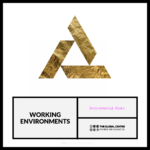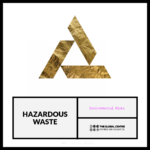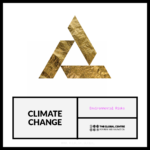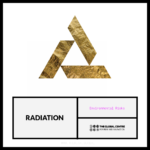The Nexus Reports provide comprehensive evaluations of country-specific risks and opportunities, focusing on biodiversity, ecosystem services, climate change vulnerabilities, socio-economic risks, the food-water-energy nexus, and exponential technologies. Drawing on authoritative sources, these reports offer tailored policy recommendations, detailed analyses, and practical case studies, integrating global scientific research to manage risks and drive sustainable development
Nexus Observatory
Environmental Risks
Welcome to GCRI’s Environmental Risks Nexus, where AI-driven insights, satellite Earth observation, and the Nexus Ecosystem (NE) converge to tackle our planet’s most pressing threats. From deforestation and water scarcity to pollution and marine degradation, we unite corporate leaders, policymakers, and communities under one collaborative framework—merging parametric triggers with real-time analytics for swift, evidence-based interventions. By integrating advanced data streams, pioneering research, and resilient policy design, GCRI empowers you to systematically mitigate risks, protect critical ecosystems, and spearhead a regenerative future that benefits both the environment and your organization’s long-term sustainability goals
Satellite Fusion
Merges multi-constellation Earth observation feeds into a unified geospatial repository. Deploys robust AI analytics for near-real-time environmental metrics and hazard detection. Accelerates cross-sector readiness from broad-scale ecosystem changes to abrupt local anomalies
Hyperspectral Insight
Captures high-fidelity spectral details from next-generation satellite sensors across diverse bands. Uses ML-driven analysis to trace vegetation stress, water composition, or soil degradation triggers. Enables early warnings on crop failures, pollutant hotspots, and illicit resource extractions
GeoAI Modeling
Deep learning with GIS data to map dynamic environmental risk patterns. Predicts climate extremes, anthropogenic pressures, and habitat shifts through multi-scenario planning. Guides integrated policies on sustainable land use, biodiversity corridors, and resource optimization
Parametric Triggers
Leverages NE's hazard forecasts to set automated thresholds for floods, droughts, or pollution. Activates immediate funding or alerts when critical risk levels are exceeded in real time. Enables agile resource allocation for both corporate ESG strategies and public resilience measures
Digital Twins
Constructs immersive 3D models of landscapes—coastal zones, wetlands, or entire watersheds. Blends satellite data, sensor feeds, and NE simulations to test flood, fire, or meltdown scenarios. Informs strategic asset defense, climate-proofing, and large-scale infrastructure restoration efforts
Innovation Labs
Offers focused, cohort-based training where teams engage HPC-lab sessions on environmental analytics. Incorporates advanced parametric finance tactics and Earth-observation pipelines to solve real problems. Delivers GCRI-endorsed certifications that validate high-level environmental risk competencies
Multisensor Mosaics
Aggregates radar, optical, and thermal captures from leading satellite missions into composite layers. Deploys ML-based classification to detect land cover changes, moisture variance, or industrial by-products. Elevates corporate EHS monitoring, compliance audits, and ESG reporting with near-real-time precision
Edge-Cloud Synergy
Runs AI modules at both remote satellite endpoints and NE cloud clusters for adaptive data routing. Triggers local event alerts instantly while funneling bulk data to the Nexus Ecosystem for in-depth analytics. Minimizes latency, resource usage, and environmental footprints through strategic edge-cloud orchestration
Anomaly Tracking
Applies time-series ML on aggregated EO archives for anomalies in deforestation, pipelines, or marine zones. Identifies abrupt changes and triggers parametric coverage for swift corporate or governmental responses. Enables multi-layer correlation across environmental, socioeconomic, and infrastructural data
Trusted By World Leaders
Our leadership is earned through proactive, cutting-edge solutions and initiatives that tackle urgent challenges while balancing immediate impact with long-term sustainability. Strengthened by strategic partnerships with global powerhouses, GCRI sets a new standard for protection and progress in an era of unprecedened risks and opportunities

Our National Working Groups (NWGs) converge to shape a future defined by resilience , innovation , and collaboration. By uniting diverse perspectives through a seamless hybrid model, we ignites breakthrough innovations and fosters dynamic partnerships that secure a brighter, more sustainable future for all
Unlocking the Power of Spatial Finance 🌌 for Disaster Readiness 📡
Transforming risk management by integrating DRR, DRF, and DRI into a seamless, proactive system. Leveraging cutting-edge geospatial analytics and innovative financial triggers, NE enables real-time insights and rapid resource mobilization to build resilient communities and drive sustainable growth
Climate Stress & Decarbonization
With intensifying climate extremes—heatwaves, storms, rising seas—organizations face existential threats to infrastructure and supply chains. GCRI’s NE solutions run deep climate scenario modeling, pinpointing vulnerabilities and orchestrating decarbonization paths aligned with ESG standards. Parametric triggers expedite finance for urgent emissions-cutting measures, bridging corporate sustainability goals and robust carbon offset frameworks
Water Scarcity & Drought Management
Intensifying drought cycles disrupt agriculture, energy, and industry. GCRI’s NE merges Earth-observation data with advanced hydrological modeling to forecast demand gaps. Parametric triggers ensure real-time resource disbursement or water-sharing compacts. Corporate skill cohorts refine water efficiency strategies, bridging NE data and integrated resource management
Marine & Coastal Risks
Rising sea levels, acidifying oceans, and coastal erosion undermine fisheries, tourism, and infrastructure. GCRI’s NE solutions fuse altimetry data, coastal imagery, and parametric coverage to guard against storm surges or coral reef collapses. Specialized training cohorts help corporate partners embrace sustainable marine management, from aquaculture expansions to reef-safe shipping routes
Biodiversity & Ecosystem Restoration
Declining wildlife populations and habitat fragmentation pose major ecological imbalances. By deploying NE species distribution modeling (SDMs) integrated with AI-based imaging, GCRI guides targeted rewilding or corridor creation. Parametric triggers mobilize philanthropic or corporate funds, ensuring swift interventions once biodiversity indicators drop below thresholds
Waste & Circular Economy
Unchecked waste management leads to leachate pollution, plastic-laden oceans, and resource depletion. Through NE forecasting of waste generation and advanced traceability solutions, GCRI fosters circular economy transitions. Parametric expansions channel investment into upcycling, e-waste solutions, and municipal composting infrastructure. Corporate cohorts refine materials management, adopting closed-loop best practices
Deforestation & Habitat Loss
Unsustainable land use, logging, and agricultural expansions jeopardize vital ecosystems. Through daily satellite-based imaging, AI-based change detection, and NE scenario planning, GCRI identifies deforestation hotspots in near-real time. Parametric mechanisms swiftly mobilize funds for reforestation and local stewardship, while micro-credential courses empower corporate teams to adopt biodiversity-positive practices
Pollution & Industrial Impact
Chemical runoff, air pollution, and effluent discharges degrade environments and threaten communities. GCRI’s integrated NE scenario tests and satellite-sourced anomaly tracking enable early detection and parametric penalty triggers if thresholds exceed safe levels. Education programs guide industries in adopting closed-loop processes, advanced sensor deployments, and transparent compliance frameworks
Urban Sustainability & Green Infrastructure
Mega-cities face heat island intensification, flash floods, and escalating pollution. GCRI curates NE modeling of green roofs, permeable surfaces, and nature-based solutions for stormwater management. Parametric finance fosters real estate transformations, bridging capital with robust environment-lens expansions. Cohorts focus on advanced ESG for city resilience, uniting public agencies and corporate developers
Climate-Smart Agriculture & Land Use
Agricultural systems, cornerstones of food security, must adapt to rising temperatures, shifting precipitation, and soil degradation. GCRI’s NE harnesses remote sensing and AI to prescribe precision irrigation, sustainable cropping patterns, and parametric-based yield insurance. Corporate teams gain micro-credentials in implementing NE insights, bridging yields with ecosystem stewardship
Environmental Governance & Policy Integration
Fragmented or outdated policies can stall environmental progress. GCRI’s NE scenario planning merges parametric triggers with stakeholder consultations, delivering data-driven legislative frameworks. Micro-credentials equip public officials and corporate compliance teams to apply NE analytics for robust policy design, bridging environment ministries, philanthropic alliances, and private sector ESG leads
Future Innovation Labs
Innovation Lab
Discover;
Learn;
Build;
We support innovation, collaboration and knowledge-sharing amongst our members, partners and the broader research, development, and education communities. Our WILPs streamline the identification, mitigation, and evaluation of Risks, followed by the optimal use of GRIx to tackle Issues and manage adverse impacts. They provide secure network platforms that enable citizens to participate in MPM and use iVRS to report risks and values anywhere. Risk Pathways deliver out-of-the-box CRS functionality to meet institutional requirements, including SCF taxonomies for digital-green skills, compliance frameworks and real-time validation systems. They help members and QH stakeholders with DICE to navigate essential resources and find the right levers across the public-private-planet landscape.
MPM
Integrated pathways for existing national portfolios on the right to inclusive education, skills development, and career mobility through LLL for all
CRS
Rewarding participation with utility value across the network to increase interoperability and career mobility
DICE
Next-generation of internet for risk and innovation in pluralistic societies
GRIx
Open source standard indexing system for linked open data set about global risk and humanitarian crisis.
iVRS
Stakeholder engagement and reporting mechanism for Environmental, Social and Governance (ESG) risks and impacts
SCF
Frameworks, skills taxonomies, competencies and policies for the twin digital-green transition
Research
0%
Design
0%
Innovation
0%
Acceleration
0%
Policy
0%
Work Environment
9 Steps
- Join “Citizen Science” Streams
- Complete the lesson Introduction to Work Environment Risks
- Publish a proposal on Work Environment Risks
- Unlock Work Issues
- Reach Technology Impact Assessment (TIA) Level I
- Reach Health Impact Assessments (HIA) Level I
- Reach Social Impact Assessment (SIA) Level I
- Reach Systems Level Impact Assessment (SLIA) Level I
- Join Hackathons
Hazardous Waste
8 Steps
- Join “Citizen Science” Streams
- Complete the lesson Introduction to Hazardous Waste Risks
- Publish a proposal on Hazardous Waste
- Reach Environmental Impact Assessment (EIA) level I
- Reach Health Impact Assessments (HIA) Level I
- Reach Social Impact Assessment (SIA) Level I
- Reach Impact Assessment (SLIA) Level I
- Join Hackathons
Climate Change
9 Steps
- Join “Citizen Science” Streams
- Complete the lesson Introduction to Climate Change Risks
- Unlock Climate Issues
- Publish a proposal on Climate Change Risks
- Reach Environmental Impact Assessment (EIA) level I
- Reach Social Impact Assessment (SIA) Level I
- Reach Governance Impact Assessment (GIA) Level I
- Reach Systems Level Impact Assessment (SLIA) Level I
- Join Hackathons
Radiation
8 Steps
- Join “Citizen Science” Streams
- Unlock “Nuclear Events”
- Complete the lesson Introduction to Radiation Risks
- Publish a proposal on Radiation Risks
- Reach Environmental Impact Assessment (EIA) level I
- Reach Technology Impact Assessment (TIA) Level I
- Reach Systems Level Impact Assessment (SLIA) Level I
- Join Hackathons
Pollution
7 Steps
- Join “Citizen Science” Seminars
- Complete the lesson Introduction to Pollution Risks
- Publish a proposal on Pollution Risks
- Reach Environmental Impact Assessment (EIA) level I
- Reach Health Impact Assessments (HIA) Level I
- Reach Social Impact Assessment (SIA) Level I
- Join Hackathons





